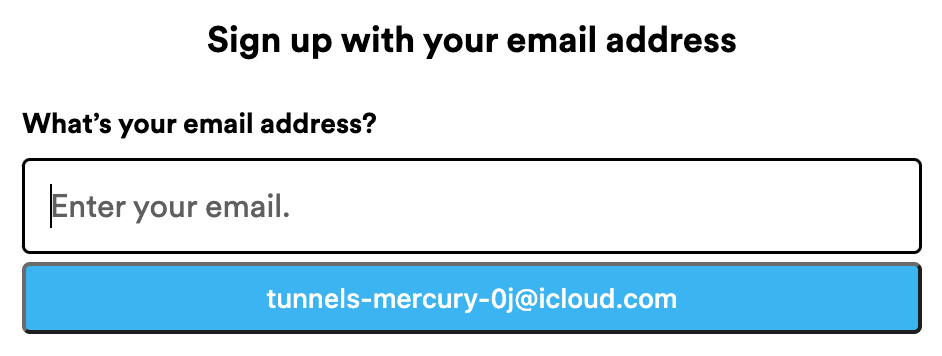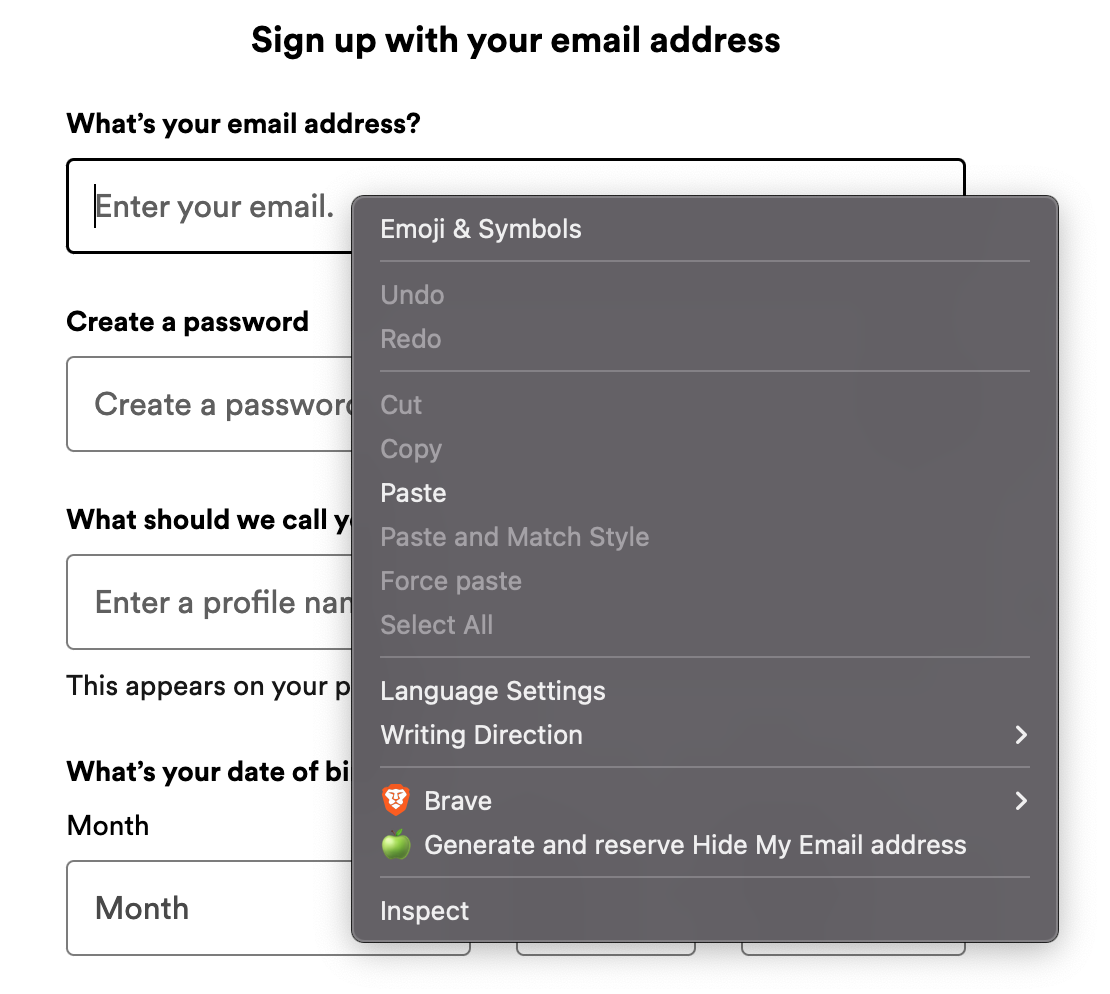Hide My Email is a premium privacy service of iCloud. Safari offers a native integration with Hide My Email, whereby users are prompted to generate a Hide My Email address upon registration to any website. This extension aims to bring a similar UX into a wider variety of browsers. In particular, it has been explicitly tested to work on:
Note that the extension should work on any browser that implements the extension API supported by Chromium-based browsers (regardless of manifest version).
Disclaimer: This extension is not endorsed by, directly affiliated with, maintained, authorized, or sponsored by Apple.
- Simple pop-up UI for generating and reserving new Hide My Email addresses
- Ability to manage existing Hide My Email addresses (including deactivation, reactivation, and deletion)
- Autofilling on any HTML input element that is relevant to email
- Quick configuration of Hide My Email settings, such as the Forward-To address, through the Options page of the extension
The extension can be configured to
- show an autofill button on input field focus
- show a context menu item when right-clicking on input fields
You can enable/disable any of the autofilling mechanisms through the Options page of the extension.
This extension is entirely writen in TypeScript. The UI pages of the extension (e.g. Pop-Up and Options) are implemented as React apps and styled with TailwindCSS.
The extension was originally developed to solely use Manifest V3 APIs. However, since most browsers have not caught up with MV3, MV2 compatibility has been introduced.
Development was carried out in the following environment:
$ sw_vers
ProductName: macOS
ProductVersion: 12.5
BuildVersion: 21G72
$ sysctl kern.version
kern.version: Darwin Kernel Version 21.6.0: Sat Jun 18 17:07:25 PDT 2022; root:xnu-8020.140.41~1/RELEASE_X86_64
$ node --version
v18.11.0
$ npm --version
8.19.2
$ pkgutil --pkg-info=com.apple.pkg.CLTools_Executables | grep version # CommandLineTools needed for node-gyp
version: 13.4.0.0.1.1651278267
$ python3 --version # needed for node-gyp
Python 3.10.5The above versions should not be regarded as hard version pins. This is just a combination of versions that happened to successfully build the extension on my machine. The following Dockerfile has been used to successfully build the extension and provides a much cleaner runtime contract:
FROM node:18.12.1-alpine3.17
RUN apk add --update --no-cache g++ make python3
ADD . /opt/extension
WORKDIR /opt/extension
ENTRYPOINT ["sh"]The table below outlines the sequence of steps that need to be followed in order to ship a change in the extension. The execution of some of these steps varies per browser/manifest version.
Note: the following console commands are to be executed from the root directory of this repo
| # | Description | MV3 (Chromium) | MV2 (Firefox) |
|---|---|---|---|
| 0 | Install deps | npm ci |
npm ci && npm i -g web-ext |
| 1 | Spin up the DevServer. The server generates the build dir. |
npm run start |
npm run start:mv2 |
| 2 | Load the unpacked extension on the browser | The build dir can be loaded as an unpacked extension through the browser's UI. See the relevant Google Chrome guide. |
web-ext -s build run |
| 3 | Develop against the local browser instance on which the build dir is loaded |
N/A | N/A |
| 4 | Build productionised artefact | npm run build |
npm run build:mv2 |
| 5 | Compress productionised artefact | zip build.zip ./build/* |
web-ext -s build build |
| 6 | Publish | N/A | N/A |
- iCloudClient to use Cookies (through tough-cookie)
- Ability to modify the label and note of existing HME addresses
- Options page to validate client token
- CI and maybe CD
- Dependabot



